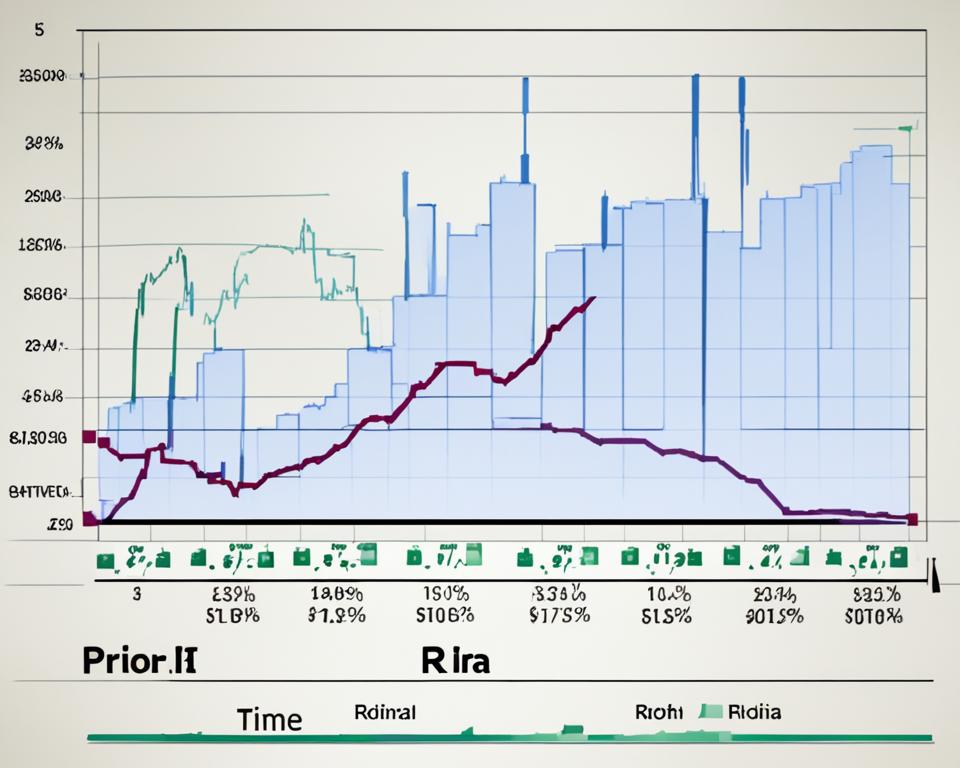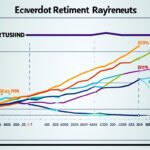The world of investment is a fascinating one, characterized by constant fluctuation. It’s a realm where investors have the opportunity to grow their capital by making strategic investments. However, achieving success requires thorough analysis, disciplined decision-making, and often, a bit of patience.
While many investors are lured into the excitement of “hot” stocks making significant gains, a wise investor knows the secret often lies in undervalued dividend stocks with strong potential for growth.
The task of identifying these underpriced gems requires a careful and methodical approach. It’s about prioritizing robust fundamentals over market enthusiasm. This is what we call the ‘stock investment strategy’.
One must understand that investing in undervalued dividend stocks is not about chasing short-term gains. It’s about dedicating oneself to a method that promises long-term growth. This strategy not only aligns with personal financial goals but also cultivates an investor’s confidence in the face of market volatility.
Key Takeaways
- Identifying undervalued dividend stocks is a crucial skill for investors.
- Investing in undervalued stocks requires focus on the stock’s robust fundamentals rather than its current market momentum.
- Successful investing is a result of disciplined execution of a well-formulated stock investment strategy.
- Emphasizing long-term growth over short-term gains increases the odds of consistent returns.
- Undervalued stocks often offer solid potential for growth.
Understanding the Pitfalls in Dividend Stock Investment
When it comes to successful investing, there is no one-size-fits-all approach. However, it is crucial to understand the common mistakes investors make while performing their dividend stock analysis and during the dividend stock evaluation process. Inaccurate analyses can lead to risky investments and negatively impact long-term financial growth.
Chasing Returns vs. Seeking Value
Many investors tend to chase after market returns, drawn in by the allure of high performing ‘hot’ stocks. While these may deliver significant gains in the short-term, they often do not hold value in the long-term and can be subject to abrupt market fluctuations. On the contrary, value investing involves identifying undervalued, potential dividend stocks, which could offer sustainable growth and impressive returns over time.
Importance of a Long-Term Investment Mindset
A long-term investment mindset is resourceful in achieving consistent returns. It prompts investors to focus on businesses with a solid track record of raising dividends. Align your decisions towards companies that have been increasing their dividends for several years. This approach aids in staying committed to growth-oriented investments, even during temporary market downturns.
The Allure of High-Yield Traps
High-yield stocks may appear enticing due to their immediate returns, but they often serve as potential traps for investors. These stocks could be a result of a falling market price or an unsustainable dividend policy by the company, which might eventually lead to diminished returns or an unexpected cut in dividends payout. It’s imperative to resist these allurements and develop a stabilized investment portfolio based on strong fundamentals and consistent performance.
| Investment Approaches | Pros | Cons |
|---|---|---|
| Chasing Returns | Short term significant gains | Substantial risk and high market volatility |
| Long-Term Investment | Potential for sustainable growth and consistent returns | Requires patience and commitment |
| High-Yield Stocks | Immediate and substantial monetary returns | Possible unsustainable dividend policy and risk of diminishing returns |
This table outlines some common approaches to investing in dividend stocks and their associated pros and cons. Armed with this knowledge, investors can be better equipped to navigate the challenging landscape of dividend stock investment, ensuring stronger financial growth in the long run.
Setting Clear Investment Objectives
In your quest to invest in undervalued dividend stocks, determining clear investment objectives is a crucial preliminary step. These objectives act as a compass, guiding you in your decision-making process. Central to this is the understanding and evaluation of undervalued stock metrics and the application of relevant stock valuation techniques.

High-Yield vs. Consistency in Dividends
Opting for high-yield dividends for immediate needs or choosing stocks with consistent dividend growth for long-term stability are among the typical decisions investors face. Both options offer advantages depending on your financial needs and investment horizon. High-yield dividends can provide immediate income, beneficial for those needing regular payouts. On the other hand, stocks with consistent dividend growth can compound in the long run and might better suit those prioritizing long-term wealth accumulation.
Defining Personal Portfolio Goals
Personal portfolio goals are another essential component of your investment objectives. They help you stay focused and on track with your financial ambitions, be it retirement planning, wealth accumulation, or generating a passive income stream. These goals can also aid in refining your selling strategy, such as timing the selling of stakes in high yield stocks to align with peer yield or consistent payers if the company breaks its dividend growth track record.
Ultimately, your investment objectives shape your approach to identifying undervalued stocks and the stock valuation techniques you employ. It’s about more than just chasing dividend payouts; it’s about comprehending the intricacies of stock valuation and harnessing these insights to construct a resilient, profitable portfolio.
Defining ‘Safety Net’ Criteria for Stock Selection
In the complex sphere of the stock market, efficacy relies heavily on a solid stock investment strategy. Key to this strategy is establishing what might be termed as ‘safety net’ criteria for stock selection. This defensive approach focuses principally on the fundamental soundness and market valuation of stocks, thereby avoiding the trap of cheap but fundamentally weak shares. It is essential to not be solely swayed by low prices; instead, the real essence lies in understanding the undervalued stock metrics that can fuel a potentially successful investment.
So, how does one set this ‘safety net’? It’s all about focusing on the right factors. Market capitalization, often abbreviated as market cap, and dividend payout history are two key factors to weigh when selecting stocks. Tools capable of deciphering these metrics and more, such as Dividend.com’s DARS (Dividend Advantage Rating System), can aid investors in framing these safety nets.
The succeeding table sheds more light on these fundamental factors:
| Factor | Description |
|---|---|
| Market Cap | It’s the total market value of a company’s outstanding shares of stock. This data point offers insights into a company’s size, which can be a determinant of risk level and potential returns. |
| Dividend Payout History | It’s an historical assessment of the dividends a company has paid out to its shareholders. A record of consistent and possibly growing dividends can indicate a financially healthy company with positive prospects. |
| Dividend.com’s DARS | A system that ranks dividend stocks based on several key measures, including relative strength, overall yield attractiveness, dividend reliability and more. It ensures the stocks chosen are fundamentally strong and have the potential for positive returns. |
In conclusion, constructing an investment portfolio using a methodical approach, grounded in solid principles and accurate undervalued stock metrics, can lead to a more reliable and potentially profitable investment journey.
How Can Investors Identify Undervalued Dividend Stocks
Investors looking to maximize their returns often aim to identify undervalued stocks, particularly those that provide dividends. But how can one determine whether a stock is undervalued? Multiple financial ratios and undervalued stock metrics can play a pivotal role in drawing such conclusions.

It’s essential to include ratios like Price-to-Earnings (P/E), Debt-Equity (D/E), and Return on Equity (ROE) in your fundamental analysis. These metrics provide an understanding of a stock’s actual value as opposed to its current market price, enabling investors to focus on long-term value potential rather than short-term market inefficiencies.
Key Metrics to Identify Undervalued Dividend Stocks
| Key financial Metrics | Role |
|---|---|
| Price-to-Earnings (P/E) ratio | This ratio compares a company’s current share price to its per-share earnings. A low P/E ratio may indicate an undervalued stock. |
| Debt-Equity (D/E) ratio | This ratio measures a company’s financial leverage. A lower D/E ratio is typically more favorable, implying a financially stable company that could be undervalued. |
| Return on Equity (ROE) | ROE helps investors understand how effectively a company uses its equity to generate profits. Higher ROE values can signal an undervalued stock that is adept at generating profits. |
Investors must exercise discipline and patience to successfully identify undervalued dividend stocks. The process involves closely analyzing a company’s fundamentals and comparing financial ratios. Above all, the goal is to perceive unseen value and potential long-term growth, rather than being influenced by fluctuating market trends.
Market Cap Considerations in Stock Assessment
Discerning investors recognize the significance of market cap in stock assessment. It can be a deciding factor when narrowing down potential investments, enabling investors to align their choices with their risk appetite and investment phase. The valuation of stocks can largely be influenced by their market cap. This factor plays a crucial role not only in choosing which stocks to invest in but also in determining the applicability of various stock valuation techniques.
Large Cap Securities for Conservative Investors
Investors who prefer stability and reliability in their investment tend to gravitate towards large cap securities. These securities, due to their sheer size and established market presence, often present lower risk and steady returns. This makes them an appealing choice for conservative investors, especially those nearing retirement. Furthermore, conducting a dividend stock evaluation on such securities can reveal a consistent history of dividend payouts, reinforcing their reputation as a safe bet.
The Growth Potential in Mid and Small Cap Stocks
Mid and small cap stocks, on the other hand, attract more risk-tolerant individuals. These stocks might present higher volatility compared to their large cap counterparts. However, they possess higher growth potential, which can result in sizeable returns in the long run. A comprehensive assessment of these stocks, using sophisticated stock valuation techniques, can unearth promising opportunities for investors with a sound understanding of the market dynamics and a penchant for risk-taking.
In conclusion, consideration of the market cap is integral to deciding on the stocks to include in one’s portfolio. Whether it’s the steadiness of large cap securities or the potential dynamism of small and mid cap stocks, the choice depends on the investors’ risk appetite and investment goals. By giving due importance to market cap considerations and dividend stock evaluation, investors can make informed decisions that align with their financial objectives.
Essential Financial Ratios for Evaluating Stocks
In the realm of dividend stock analysis and the broader process of making informed investment decisions, understanding and correctly interpreting financial ratios is integral. These numerical values allow investors to dig deeper into a company’s financial state, offering critical data that aids in the application of various stock valuation techniques and helps determine whether a stock is undervalued.
Price-to-Earnings Ratio (P/E)
The Price-to-Earnings (P/E) ratio compares a company’s current share price to its per-share earnings. By considering this ratio, investors can get an idea of how much they are paying for each dollar of earnings. A lower P/E ratio could indicate that the stock is potentially undervalued.
Debt-Equity Ratio (D/E)
The Debt-to-Equity (D/E) ratio helps investors understand a company’s financial leverage by comparing its total liabilities to its shareholders’ equity. This measure is particularly useful when compared to the industry average, providing an insight into the company’s risk level relative to its peers.
Price-Earnings to Growth Ratio (PEG)
The Price-Earnings to Growth (PEG) ratio provides a more refined perspective, taking into account the company’s projected earnings growth rate. A lower PEG ratio can suggest a stock is undervalued, even when its P/E ratio might seem quite high.
These ratios, teamed with others such as the dividend yield and the price-to-book ratio, provide investors with a comprehensive toolbox for dividend stock analysis and the application of advanced stock valuation techniques.
Analyzing Dividend Payout and Growth Histories
One of the key components of dividend stock evaluation revolves around the analysis of dividend payout patterns and growth histories. This involves a meticulous review of a company’s track record concerning its dividend distribution consistency over several years.
An ongoing increase in dividends can be a favourable sign, reflecting a company’s continued profitability and commitment to its shareholders. On the other hand, erratic or diminishing dividends might merit caution as they indicate potential instability.
Investors can use a variety of tools to analyze a company’s dividend history. These resources help determine whether a stock is undervalued, overvalued, or fairly priced.
- Dividend Yield: This represents the annual dividend payment divided by the stock’s current market price. A high yield could signal an undervalued stock, but it could also be a red flag for potential problems.
- Payout Ratio: This is the ratio of dividends paid to company earnings over the same period. If this ratio is too high, say over 80%, it may signal danger.
- Dividend Growth Rate: This is the annual rate at which the dividend payment has been growing. Consistent growth could suggest an undervalued stock primed for future growth.
This historical analysis is crucial in determining an investor’s strategy, particularly if they are focusing on undervalued dividend stocks with promising futures. By understanding the company’s dividend history, investors can better attune themselves to how particular stocks will perform in the future.
Utilizing Dividend Stock Screeners
In the world of investment, dividend stock screeners are often seen as powerful allies for investors hoping to cut through the noise and identify undervalued stocks. Not only can these tools streamline your search, but they can also enhance your ability to make timely decisions when investing in dividend stocks.
The Role of Market Correction in Timing Purchases
Market corrections can often be an advantageous time for investors to consider purchasing. When prices drop, high-quality stocks may become undervalued, creating an excellent window of opportunity for strategic investors. Dividend stock screeners play an essential role here, aiding investors in timing their purchases to maximise their benefits.
Curating a Watchlist for Future Investments
Beyond timing purchases, dividend stock screeners are also useful for creating and updating a watchlist of potential investments. By monitoring a curated list of stocks, investors can keep a finger on the pulse of companies they believe will extract future value from. In fact, keeping such a watchlist can often mean the difference between seizing an opportunity and missing it altogether.
This combination of timing purchases and maintaining a watchlist is an integral part of dividend stock analysis. Making use of these invaluable tools can not only steer you towards undervalued assets but also ensure that you capitalise on every promising opportunity that comes your way.
FAQ
How can investors identify undervalued dividend stocks with growth potential?
Investors can identify undervalued dividend stocks with growth potential by developing a disciplined approach geared towards long-term growth and using financial metrics and tools in their fundamental analysis. This can entail setting clear investment goals, defining safety net criteria for stock selection, considering market cap, and extensively using stock valuation techniques such as the Price-to-Earnings ratio, Debt-Equity ratio, and Return on Equity. Tools like Dividend.com’s DARS and dividend stock screeners can also be highly beneficial in the discovery and evaluation of undervalued stocks.
What are some pitfalls in dividend stock investment?
Some common pitfalls in dividend stock investment include chasing returns rather than seeking value, being lured by high-yield traps and not maintaining a long-term investment mindset. It is vital to avoid purchasing cheap but fundamentally weak stocks and to focus instead on robust fundamentals and market valuation.
How essential is setting clear investment objectives in dividend stock investment?
Setting clear investment objectives is of paramount importance in dividend stock investment. Investors should decide whether they are opting for high-yield dividends for immediate needs or choosing stocks with consistent dividend growth for long-term stability. Defining personal portfolio goals will facilitate managing the investment position in the future and help ensure that they are on track to meet their financial objectives.
What is the role of market cap in stock assessment?
Market cap plays a significant role in stock assessment. Conservative investors, particularly those nearing retirement, may prefer large cap securities for their reliability. More risk-tolerant individuals, however, might choose mid and small cap stocks due to their higher growth potential. The decision should ideally match the investor’s risk appetite and investment phase.
Why are financial ratios significant for evaluating stocks?
Financial ratios help evaluate the stock’s value and discern whether it’s undervalued. The Price-to-Earnings ratio compares the stock price to earnings, with a low ratio suggesting potential undervaluation. The Debt-Equity ratio measures financial leverage, and the PEG ratio provides insight into earnings growth. These ratios, among others like dividend yield and price-to-book, offer a nuanced approach to analyzing stocks.
How does one analyze dividend payout and growth histories?
Analyzing dividend payout and growth histories involves meticulously reviewing a company’s track record of consistent dividend distribution over several years. A consistent increase in dividends can be a favorable sign, whereas erratic or diminishing dividends might merit caution. This historical analysis is crucial for future performance prediction.
What is the role of dividend stock screeners in identifying undervalued stocks?
Dividend stock screeners help investors filter and identify undervalued stocks. They are valuable tools that help investors time their purchase by considering market corrections, which can present buying opportunities for high-quality stocks at discounted prices. Curating and monitoring a watchlist ensures potential investment opportunities are not missed during market fluctuations.












